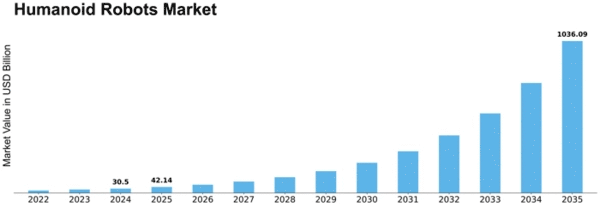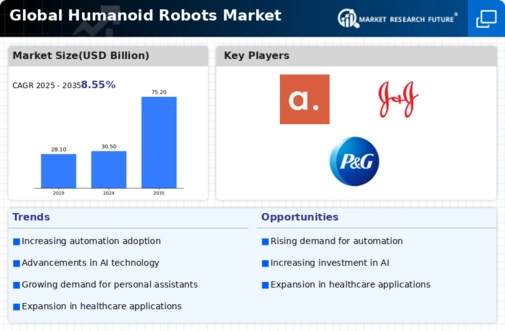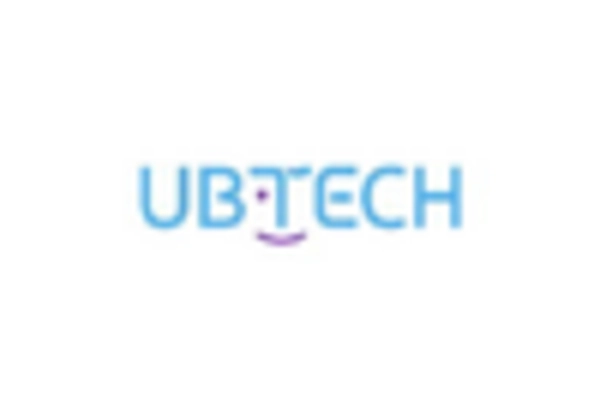Humanoid Robots Size
Humanoid Robots Market Growth Projections and Opportunities
One important market aspect is the increasing requirement for automation across several industries. Humanoid robots have become more sophisticated as a result of the advancement of these technologies; they are now capable of carrying out challenging jobs and blending in perfectly with their surroundings. Tasks that people typically conduct can be considerably automated with the help of humanoid robots. These industrial robots increase productivity and efficiency by performing tasks like welding process, assembling, and quality control. Due to the increasing requirement for automation, more accessible solutions, more accuracy, and the ability to perform repetitive tasks, the marketplace for humanoid robots will continue to expand. Since they can fill this void by aiding, companionship, and healthcare services, humanoid robots are growing in popularity in the healthcare sector. However, market factors also include barriers that can prevent the market for humanoid robots from growing. AI and robotics-related moral dilemmas are one such challenge. It is critical to provide clear rules and principles to alleviate these concerns and promote trust among users and stakeholders. Additionally, the market dynamics are impacted by the competitive landscape and the presence of significant industry players. The general dynamics of the market are influenced by ongoing R&D initiatives, agreements on strategy, and investments in innovation. The strong rivalry in marketplace forces manufacturers of humanoid robots to continuously enhance their products and create new functions, features, and applications. The humanoid robot industry is influenced by advancements in technology, the increasing demand for automation, human-robot cooperation, ethical and fiscal issues, and market competition. There are multiple market aspects that can be related to the increase, evolution, and impact of humanoid robots throughout different industries. These factors also set the stage for a time in the future when humans and robots collaborate to solve complex issues and raise wellbeing and productivity.

















Leave a Comment